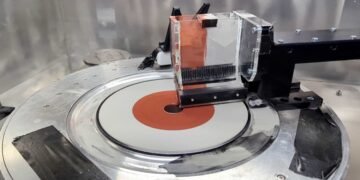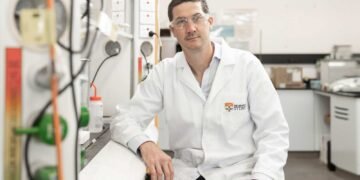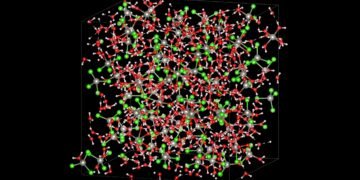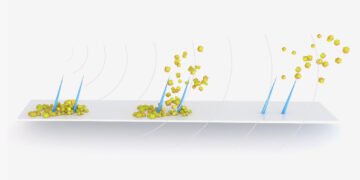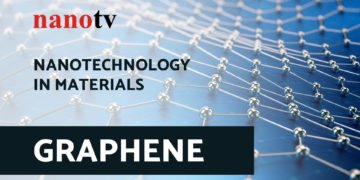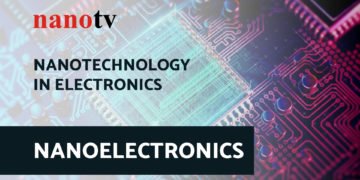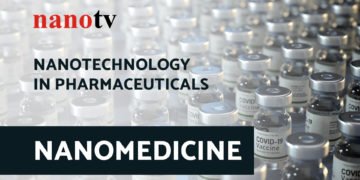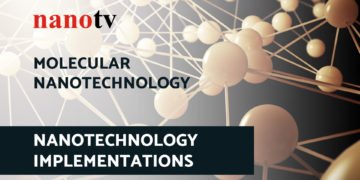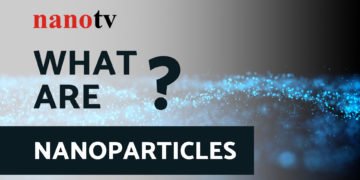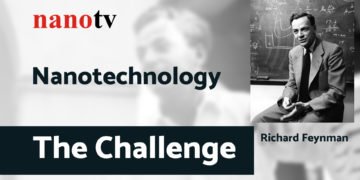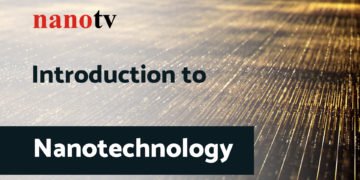By Amrita Samal & Subhranshu Sekhar Samal
Amrita is Assistant Professor in the Department of Computer Application, KCG College of Technology, Chennai and Subhranshu is Scientist C at the Centre for Nanoscience & Nanotechnology, Sathyabama Univeristy, Chennai
Computers, internet and mobile phones have become an indispensable part of daily life. Information and Communication Technology (ICT) has gone a long way in a very short span. Research and development has given electronics a boost to move forward at a rapid pace. Electronics in future will further change the way we work and live. A newborn infant in the year 2050 will enter the world in same biological way. However, world before his eyes will be far more different than the world we know today.
Nanotechnology has been developed mostly from the basis in physics, chemistry, material science and biology. As nanotechnology is a truly multi-disciplinary field, the cooperation between researchers in all related areas is crucial to the success of nanotechnology.
Applications of nanotechnology are being used to produce chips that are comparatively thousands of times smaller than a normal chip produced today. We could be carrying a supercomputer embedded under our skin all the times and may never know it because of its negligible size. Medical diagnosis will see a new wave of advancements as nanotechnology experiments of the day are deemed successful.
Role of Information Technology
Progress in information processing has depended on the continued application of Moore’s Law, which predicts a regular doubling of the number of transistors that can be placed on a computer chip. This produced exponential improvements in computing speed and price performance. Current computer technology is based on the Complementary Metal Oxide Semiconductor (CMOS). The present generation of computer chips already depends on features as small as 70 nanometers. Foreseeable advances in nanotechnology are likely to extend CMOS technology out to 2015.
However, at transistor densities beyond that several problems start to arise. One is the dramatic escalation in the cost of a new fabrication plant to manufacture the chips. These costs must be amortised over the cost of the transistors, keeping them expensive. Second, it becomes increasingly difficult to dissipate the heat caused by the logic devices. Lastly, at such small distances, electrons increasingly tunnel between materials rather than going through the paths programmed for them. As a result of these constraints, any continuation of Moore’s Law much beyond 2015 is likely to require the development of one or more new technologies.
Future advances will also bring us closer to a world of free memory, ubiquitous data collection and massive serial processing of data using sophisticated software, and lightning-fast, always-on transmission.
The Future of Computing Technologies
There are several critical areas that hold promises of computing
Nanofabrication: Carbon nanotubes (CNTs) are an exotic variation of common graphite having super strength, low weight, stability, flexibility and large surface area. Potential applications of CNTs include transistors and diodes, field emitter for flat-panel displays, cellular-phone signal amplifier, ion storage for batteries and materials strengthener.
Nano electro mechanical systems [NEMS] are being developed for heterogeneous assembly in business sectors including medical optical assemblies, telecommunications, consumer electronics, microfluidics, defence and space needs.
Chemically assembled electronic nanotechnology is another emerging area. This uses self-alignment to construct electronic circuits out of nanometer-scale devices that take advantage of quantum-mechanical effects.
Biocomputing: Cross-fertilisation of biotechnology with information technology reveals the inherent formation theories of natural life sciences with high-end computational techniques. Efforts have been made to compile full genetic information stored in the nucleus and the mitochondria as digital repositories of information.
Molecular Computing: Researchers had built an electronic switch consisting of a layer of several million molecules of an organic substance called rotaxane. By linking a number of switches, the researchers produced a rudimentary version of an AND gate. One of the simplest active devices was a molecular based on a string of 3 benzene rings in which orbitals overlapped throughout.
Optical Computing: In optical computers, electrons are replaced by photons. Thus it is possible to fabricate closely packed nanostructures. Researchers are using new conducting polymers to make transistor-like switches smaller and 1,000 times faster than silicon transistors.
There are a number of proteins, which are sensitive to light and change their structures/orientation depending on the wavelength of the light. Bacteriorhodopsin obtained from green algae has been used for writing and reading information using laser beams of different wavelengths.
Quantum Computing: Quantum computing aims to apply the specific aspects of quantum theory in the development of the novel systems and techniques for information processing. By employing the extraordinary properties of quantum mechanical operations, such as superposition, entanglement, complementarity and uncertainty, data can be encoded in the quantum states of matter or light and manipulated with unprecedented speed and efficiency.
This emerging technology can revolutionise information processing, providing novel methods of securing, processing, storing, retrieving and transmitting information. Practical applications could include super fast computers operating at the sub-atomic scale, and fully secure information transmission.
Comparison between current and future scenario of nano computing
| Current Scenario | Future Scenario |
| Boolean Logic | Neural Network, CNN,QCA |
| Binary Data Representation | Associative, Patterned, Memory Based, data Representation |
| 2D | 3D |
| Homogeneous | Non Homogeneous |
| Globally Interconnected | Nearest Neighbor Hood |
| Synchronous | Asynchronous |
| Von Neumann | Integrated Memory/Logic |
| 3 Terminals | 2 terminals |
Areas of Research on Nanocomputing
Mechanical Nanocomputing: It is similar to Babbage’s idea of a mechanical computer. Problem – nanogears are difficult to make and install (need to use Scanning Tunneling Microscope to “hand positioning” the molecules) Scanning Tunneling Microscope allows viewing the topography of a surface atom by atom. Gerd Binnig and Heinrich Rohrer, researchers for IBM received the Nobel Prize (1986) for their achievement.
Chemical Nanocomputing: It processes information by making or breaking the chemical bonds and storing the data in the resulting chemicals.
Electronic Nanocomputing: These are more likely the way nanocomputing will go due to the experience with transistors. They will store information based on the positioning of the electron. The most promising data storage is single electron transistors and quantum dots (nanometer scale “boxes” that hold and release electrons).
Quantum Nanocomputing: Each bit of information will be stored in the position of the atom, such as a spin of an atom. Problems include susceptible to outside interference and need to work near zero degree temperature.
Convergence of Technologies
The information technology and communication technology have already converged leading to Information and Communication Technology (ICT). Information technology combined with biotechnology has led to bio-informatics. Similarly, Photonics is grown out from the labs to converge with classical Electronics and Microelectronics to bring in new high speed options in consumer products. Flexible and unbreakable displays using thin layer of film on transparent polymers have emerged as new symbols of entertainment and media tools.
Now, nanotechnology has come in. It is the field of the future that will replace microelectronics and many fields with tremendous application potential in the areas of medicine, electronics and material science. When nanotechnology and ICT meet, integrated silicon electronics, photonics are born and it can be said that material convergence will happen.
With material convergence and biotechnology linked, a new science called Intelligent Bioscience will be born which would lead to a disease free, happy and more intelligent human habitat with longevity and high human capabilities. Convergence of bio-nano-info technologies can lead to the development of nano robots. Nano robots when they are injected into a patient will diagnose and deliver the treatment exclusively in the affected area and then the nano robot gets digested as it is a DNA based product. Open source development would enable the empowerment of the network throughout the world as it allows for a stable network backbone for the small time opportunists to develop.
Initiatives taken by Department of Information Technology
The Department of Information Technology (DIT), under the Ministry of Communication and Information Technology, Government of India was set up with the agenda of making India a front-runner in the age of information revolution. Realising the potential of nanotechnology in information and communication technology, the DIT launched a Nanotechnology Development Program in 2004 and had made huge investment on nanotechnology projects and Centres of excellence in Nanoelectronics at IISc, Bangalore and IIT Bombay in 2007.
Way Forward
Now-a-days, quantum computing remains in its pioneering stage. At this very moment obstacles are being surmounted that will provide the knowledge needed to thrust quantum computers up to their rightful position as the fastest computational machines in existence. Error correction has got promising progress to date, nearing a point now where we may have the tools required to build a computer robust enough to adequately withstand the effects of decoherence.
Quantum hardware, on the other hand, remains an emerging field, but the work done so far suggests that it will only be a matter time before we have devices intelligent enough to quantum algorithms. Quantum computation has its origins in highly specialised fields of theoretical physics, but its future undoubtedly lies in the profound effect it will have on the lives of all mankind.
Further Reading
- Feynman, R P, (1982), “Simulating Physics with Computers,” International Journal of Theoretical Physics, Vol 21, pp 467-488.
- Drexler, K E (1992), “Nanosystems: Molecular Machinery, Manufacturing, and Computation.” John Wiley & Sons, New York.
- Astumian, R D (2001), “Making Molecules into Motors.” Scientific American, USA.
- Ranjan, D, Tripathi, A K, (2009) “Computational Nanotechnology: An Assesment,” Digest Journal of Nanomaterials and Biostructures, Vol 4, pp 233 – 241.
- MCIT, GOI-DIT (2009-2010): Information Technology Annual Report, viewed on July 6, 2011 http://www.mit.gov.in/sites/upload_files/dit/files/annualreport2009-10(1).pdf.
- MCIT, GOI-DIT (2007-2008): Information Technology Annual Report, viewed on July 5, 2011 http://www.mit.gov.in/sites/upload_files/dit/files/annualreport2007-08.pdf.
- Abdul Kalam, A P J, (2010 ) “New Frontiers of Technology.” Paper presented at the International Conference on Communications, Computers & Devices (ICCCD 2010), IIT Kharagpur, 10-12 December.
- TERI (2009): Nanotechnology developments in India: A status report, viewed on July 7, 2011 http://www.teriin.org/nano-uploads/D5_NT_Development_in_India_Apri_2010.pdf.












